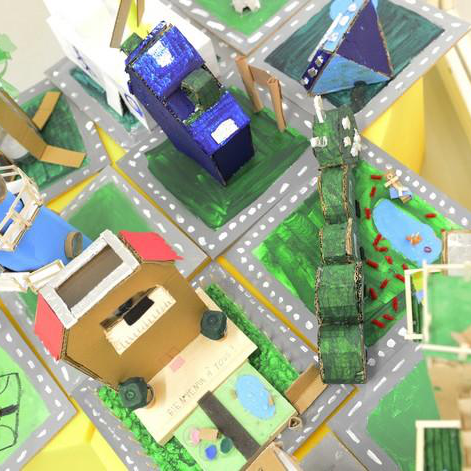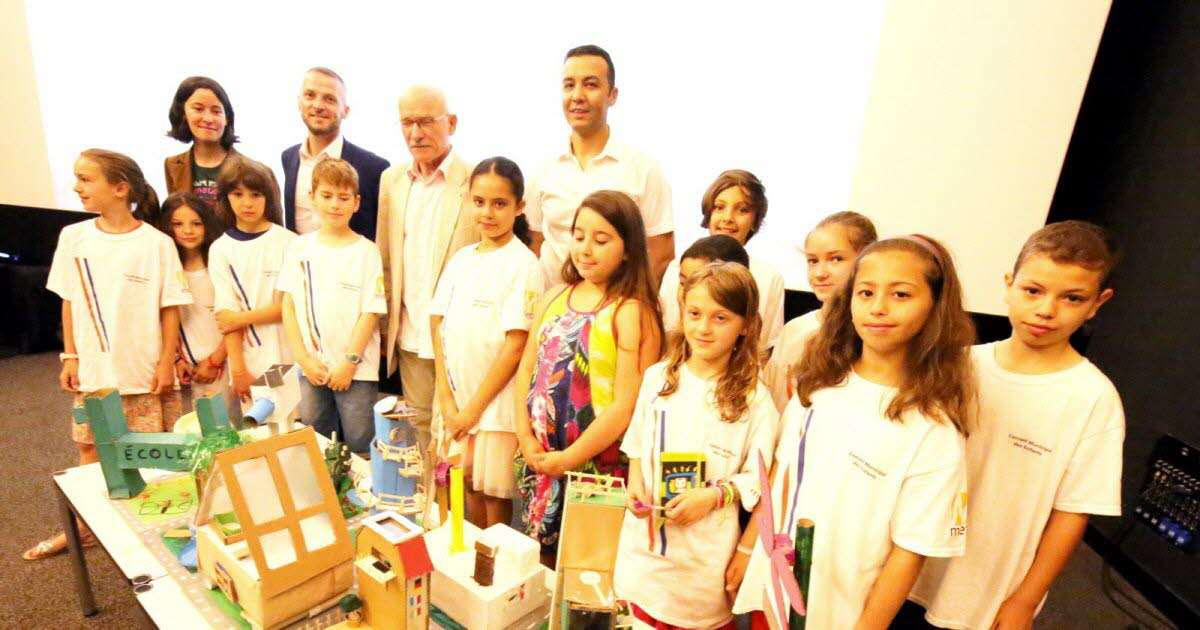The city of Metz - France
Citizenship and Participatory Democracy Department of the city of Metz
2018 - 2019
Entire region
To improve the quality of the public decision-making process through the mechanisms of participatory democracy.
This objective was achieved by bringing a young segment of society (children between ages 8 and 11) into the shared process of constructing a city project that integrates the objectives of Sustainable Development (SDO).
As an agent in its own right, the Municipal Children’s Council provided art and imagination to help define an urban, ecology and solidarity project that fully integrates the Agenda 21 citizen action plan, which was drafted by the people.
This experience is innovative in many ways:
The year-long participation of a group of agents made up of children between ages 8 and 11, who are often only marginally consulted or even completely left out of participatory approaches;
The involvement of children at the same level as the adult citizens, in an urban and environmental project, integrating the objectives of sustainable development;
The use of an artistic preference that placed the children’s creativity and their imagination at the heart of the process;
The gathering and use of recyclable materials for the creation of a model that had never been seen before.
The methodological elements and the specific results of the process can be consulted in a booklet published for this purpose (as well as on the city’s website) and available at district civic centres, schools, recreation centres, libraries, etc. In addition to exploring the artistic process that was undertaken, this public document provides the details of the methods involved, allowing other institutions to make use of and draw inspiration from this experience, in order to extend their own fields of participation.
Moreover, the model built by the children has been on display at the Metz City Hall and presented at different ecology and sustainable development events (such as those of the European Institute of Ecology, among others).
Also, all the information is public and accessible to any establishment, structure or group that may be interested in it.
The process, which began within a context of climate and environmental urgency, has benefited from the inclusion of different components to ensure its feasibility, particularly the following:
The sustained and active involvement of children was made possible thanks to the Municipal Children’s Council, which acts as a standing and member body, a participatory ecosystem that was initially set up in Metz in 2008.
The creation of the model was possible thanks to the collection of simple recyclable materials that were easy to find.
The artistic aspect was supervised and encouraged by an artist who helped guide the children’s creativity throughout the entire project
The creation of the booklet and its publication was made possible thanks to the support of the Communication Department of the city of Metz and its municipal printing office.
The involvement of many different agents with diverse skills has increased the project’s feasibility, thanks to their transversal and multidisciplinary nature. This cross-functionality, which assures success, was combined with an alignment of the different readings of the city by the agents involved.
All the legal and financial aspects, as well as those relating to the ongoing involvement of the children (and their supervision) were hence brought together to enable the initiative to be carried out effectively and in a timely manner.

This experience, which was organised in cooperation with the Centre Pompidou-Metz (museum), the local schools and the municipal services on the one hand, and with artist Sarah Poulain on the other hand, has benefitted from the expertise of the structures and agents involved, as well as from the broad dissemination by the many different channels of communication. Technical, educational, artistic and creative experts have come together in this multi-disciplinary process.
It is also worthy of note that this experience forms part of a larger public participation process that began within the framework of the draft of a sustainable territory project (Agenda 21). Hence, this experience was born out of a truly collective thought process and within the framework of a global project involving different categories of agents. In this regard, 385 children took part in a survey drafted by the children of the Municipal Children’s Council, titled "Metz, Ville Durable" ("Metz, Sustainable City").
Finally, it must be noted that futurist architect Luc Schuiten, who took part in the unveiling of the model during its first exhibition at the Centre Pompidou-Metz, widely praised the work of the children and acknowledged the model’s innovative magnitude.
Role of the agents involved:
Citizenship and Participatory Democracy Department of the city of Metz: supervision of the children, project coordination and logical and legal monitoring of the actions carried out;
Sustainable Development Department of the city of Metz: transmission of information on sustainable development issues and climate deregulation;
Schools in the region: involvement of classes in the project-process/ dissemination of the completed work and communication of the model;
Centre Pompidou-Metz: provided the necessary workrooms to enable the workshops to be held / contact and partnership with artist Sarah Poulain / reception and exhibition of the model;
Sarah Poulain: creative supervision and artistic monitoring of the workshops / assistance with the draft of sketches,
Luc Schuiten: contribution of an architectural perspective / participation at the unveiling.

The elements resulting from the work carried out were disseminated through different information channels:
Written, edited and published brochures;
Announcements and communications made by the municipal services, local schools, local associations and bodies, as well as the project’s stakeholders;
Information disseminated through the press;
Information posted on the Metz city website;
Display of the model in different places.
From the perspective of accountability, this initiative, which has a forward-looking component, is also conceived as a specific plan of action involving both children and all the other partner agents.
Evaluated by a panel of experts throughout the process and up to the presentation of the model, this experience, which was innovative in so many regards, earned a “Democracy and Youth” Award, which was presented to the children by François de Rugy, the Minister of Ecology and Richard Ferrand, the President of the National Assembly, during the “Eco Mayors” ceremony at the National Assembly.

